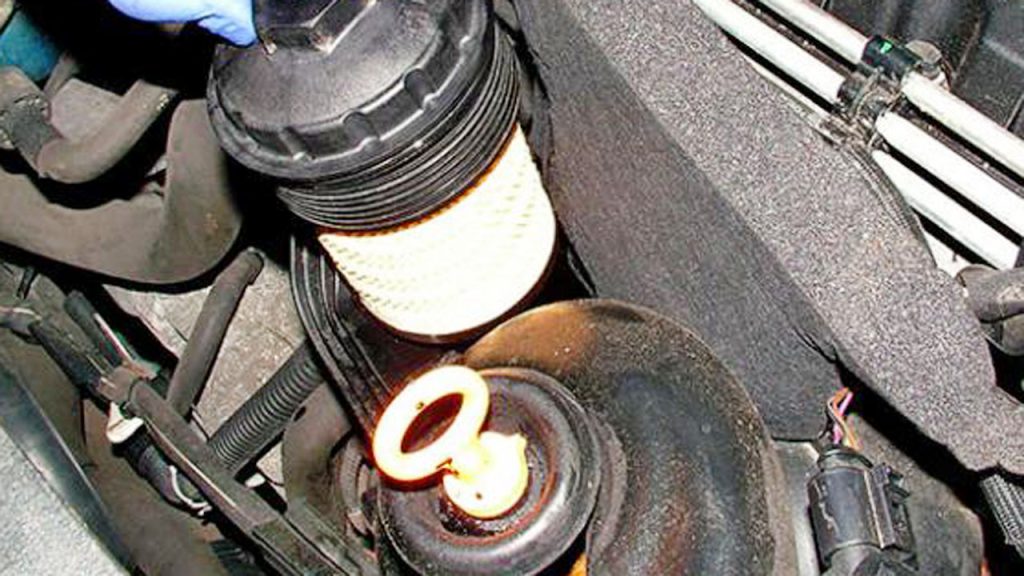When it comes to car maintenance, the question of whether you can reuse an oil filter might cross your mind. It’s a fair thought, especially if you’re looking to save money or reduce waste. I’ve been there too, standing in the garage, holding an oil filter, and wondering if it could last one more cycle. Let’s dive into this topic together and explore whether reusing your oil filter is a smart choice or a risky move for your engine.

Image by theengineeringchoice
Role of an Oil Filter
Before deciding if you can reuse an oil filter, let’s start with what it actually does. The oil filter is like a gatekeeper for your engine. Its job is to trap dirt, debris, and metal particles that circulate in the engine oil. Clean oil is crucial because it lubricates your engine’s moving parts, reducing wear and tear.
When the oil filter gets clogged or stops functioning effectively, it can lead to reduced engine performance, overheating, and even long-term damage. That’s why the oil filter is such a small yet vital component of your car’s health.
Can You Reuse an Oil Filter?
The short answer is that it’s technically possible, but it’s not recommended. Here’s why:
Oil Filters Are Designed for Single Use
Most oil filters are engineered as single-use components. They are built to handle a specific amount of contaminants before their efficiency drops. Reusing them compromises their ability to filter out debris effectively.
Risk of Contamination
An old oil filter can hold trapped debris and sludge. When reused, these contaminants might flow back into the engine, defeating the purpose of having a filter in the first place.
Wear and Tear
Oil filters have seals and internal components that degrade over time. Reusing an old filter increases the risk of leaks and improper oil filtration, which can harm your engine.
Cost vs Benefit
The cost of a new oil filter is relatively low, especially when compared to potential engine repairs. Skimping on a new filter is rarely worth the risk.
Pros and Cons of Reusing an Oil Filter
Here’s a quick look at the potential advantages and disadvantages of reusing an oil filter.
| Pros | Cons |
|---|---|
| Saves money in the short term | Reduced filtration efficiency |
| Reduces waste if filter is reusable | Risk of engine damage due to debris |
| Convenient if you’re in a pinch | Potential leaks from worn components |
When Is It Safe to Reuse an Oil Filter?
While it’s generally not advised, there are a few scenarios where reusing an oil filter might be acceptable:
- Short-Term Reuse: If you’ve just changed your oil filter recently and need to replace the oil for some reason, you might consider reusing it for one more cycle.
- Reusable Filters: Some high-quality, washable oil filters are designed to be reused. These are usually made of metal and can be cleaned and reinstalled.
How to Clean a Reusable Oil Filter
If you’re using a washable oil filter, here’s how you can clean it safely:
- Remove the Filter: Carefully unscrew the filter and drain the excess oil into a pan.
- Disassemble (If Applicable): Some reusable filters can be taken apart for thorough cleaning.
- Wash with Solvent: Use a cleaning solvent to remove dirt and sludge from the filter.
- Rinse and Dry: Rinse with clean water and let the filter dry completely before reinstalling it.
- Inspect for Damage: Check for any signs of wear or damage before reuse.
Why It’s Better to Use a New Oil Filter
After exploring the risks of reusing an oil filter, let me share why using a new filter is almost always the better option:
- Optimal Performance: A new filter ensures your engine gets the clean oil it needs for peak performance.
- Peace of Mind: You won’t have to worry about contaminants or leaks compromising your engine.
- Extended Engine Life: Proper filtration reduces wear and tear, extending your engine’s lifespan.
- Affordable Maintenance: Most oil filters are reasonably priced, making them a cost-effective part of regular car maintenance.
Signs You Need to Replace Your Oil Filter
Here are some signs that your oil filter needs replacing:
- Low Oil Pressure Warning: A clogged filter can cause a drop in oil pressure.
- Dirty Oil: If the oil looks dark or sludgy, the filter may not be doing its job.
- Engine Overheating: A clogged filter can restrict oil flow, leading to overheating.
- Strange Engine Noises: Knocking or grinding sounds could indicate poor lubrication.
How to Replace Your Oil Filter
Changing your oil filter is a straightforward process that can be done at home with basic tools:
- Gather Supplies: You’ll need a new oil filter, fresh oil, a wrench, and a drain pan.
- Drain the Old Oil: Place the drain pan under the car and remove the oil drain plug. Let the oil drain completely.
- Remove the Old Filter: Unscrew the old filter using a wrench. Be prepared for some oil to spill out.
- Prepare the New Filter: Apply a thin layer of fresh oil to the rubber seal of the new filter.
- Install the New Filter: Screw the new filter in place by hand, ensuring it’s snug but not over-tightened.
- Refill with Oil: Replace the drain plug and fill the engine with fresh oil. Check the oil level and top off if needed.
Comparison Between Reusing and Replacing an Oil Filter
| Aspect | Reusing an Oil Filter | Replacing an Oil Filter |
|---|---|---|
| Cost | Low immediate cost | Affordable and cost-effective overall |
| Efficiency | Reduced after the first use | Optimal filtration every time |
| Risk of Contamination | High risk | Minimal risk |
| Longevity of Engine | May shorten engine life | Extends engine life |
My Experience with Oil Filters
I remember the first time I thought about reusing an oil filter. I was trying to save a few bucks and figured it wouldn’t make a big difference. Unfortunately, it led to reduced engine performance, and I had to take my car to the mechanic sooner than expected.
Since then, I’ve learned the value of proper maintenance. Changing the oil filter with each oil change has become a no-brainer for me. It’s a small investment that makes a huge difference in the long run.
Conclusion
While it might seem tempting to reuse an oil filter, especially to save a little money, the risks far outweigh the benefits. Oil filters are designed for single use, and reusing them can lead to poor filtration, engine damage, and costly repairs.
Investing in a new oil filter with each oil change is the best way to keep your engine running smoothly and extend the life of your vehicle. Trust me, your car will thank you for it.
FAQs
Can I clean and reuse a standard oil filter?
No, most standard oil filters are not designed for cleaning or reuse. They should be replaced during each oil change.
How often should I change my oil filter?
It’s recommended to change the oil filter every time you change your oil, typically every 3,000 to 5,000 miles.
Are reusable oil filters worth it?
Reusable oil filters can be worth it for high-performance vehicles or if you’re eco-conscious. However, they require proper cleaning and maintenance.
What happens if I reuse a clogged oil filter?
Reusing a clogged oil filter can lead to reduced oil flow, poor engine performance, and potential engine damage.
How can I tell if my oil filter is still good?
Check for signs like clean oil, proper oil pressure, and smooth engine performance. If you’re unsure, it’s safer to replace it.


